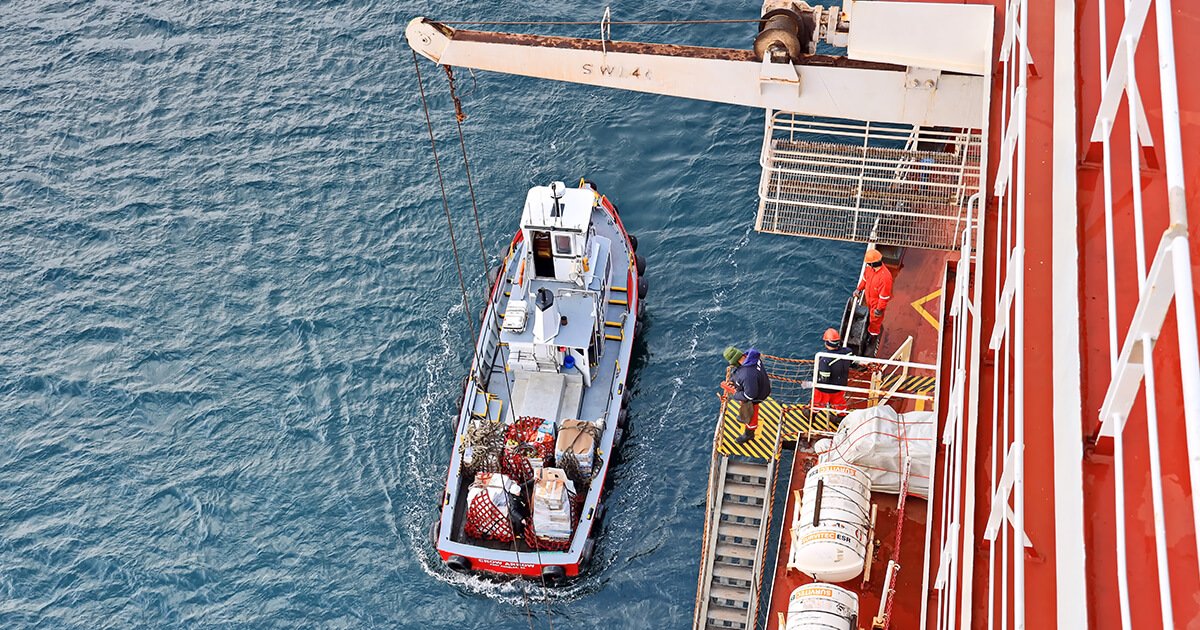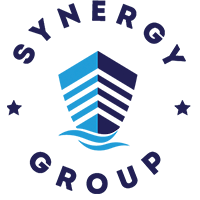
WE NEED TO UNDERSTAND EACH OTHER’S NEEDS
Synergy Marine Group’s Head of Procurement, Natarajan Duraisamy, talks to Felicity Landon from IMPA Magazine about collaboration, communication and resilience in a fast-changing world.
Being able to stand in someone else’s shoes can make all the difference, and Natarajan Duraisamy can draw on 15 years’ seagoing experience in his latest role.
After a maritime career spent mainly on oil tankers, Natarajan came ashore in 2013. He joined Synergy Maritime, where he worked as a Technical Superintendent for five years and a Fleet Manager for three years before becoming head of procurement two years ago.
“My experience at sea meant that when I became a Technical Superintendent I knew what a Chief Engineer needs. I could imagine myself in his position and work with him in terms of supplies, services and support,” says Natarajan. “Now, in procurement, I know what the technical team needs. At Synergy we focus on real collaboration between our various teams, for instance technical, accounts, HSEQ and procurement. We need to understand each other’s needs in order to put good strategies in place.”
Natarajan is based in Chennai, which is Synergy Maritime’s biggest technical and operational office, handling half of almost 600 vessels under Synergy management.
“The company started with four bulk carriers in 2006 and then expanded to start managing tankers. Today we manage all types of vessels, including LNG carriers, chemical parcel tankers, oil tankers of all sizes, bulk carriers and container ships,” says Natarajan. We have 22 offices in 12 countries. I travel a lot to keep in touch with the teams – it is important to know the people you are working with.”
Synergy bases its procurement activities on clear policies and principles, he says. “Our mission is to procure goods and services that meet our clients’ needs and requirements, with on time delivery, optimal quality, the best price and the least operational risk.”
Natarajan considers that cost optimisation is “the major one” for any procurement organisation. How a company goes about achieving that tells us a lot about their priorities. It requires contract negotiation to achieve favourable terms with suppliers, bulk purchasing to get economies of scale and exploring things with alternative suppliers to see if better value for money can be found.
He observes, however, that “Building strong relationships with our suppliers is crucial – we want to create long-term partnerships. We have regular supplier performance and relationship management meetings, which help us to collaborate with our suppliers.”
A “robust organisational structure” for procurement was introduced nearly three years ago, which included creating separate strategic teams covering category and also vendor management. “A lot of data management and analysis, along with contract negotiation, is done by the category management team,” says Natarajan. “However, many of our vessels will call at remote ports where we don’t necessarily have an established supplier, so we will still need to work with those who may not be on our preferred list. That part is taken care of by the vendor management team, which is responsible for identifying new suppliers. They do the due diligence and check capabilities and financial stability, and they are also responsible for audits. And naturally there is a lot of communication between the two teams.”
Asked about the big challenges, Natarajan immediately points to decarbonisation and sustainability, which means identifying suppliers with strong sustainability processes. He explains that “Synergy is increasingly focusing on sourcing sustainable products, materials and services, to reduce our carbon footprint and to align with our climate change goals. The availability of suitable products can be a challenge, especially in smaller ports. And even though we ourselves look for sustainable products, we must also continue to encourage our buyers to bring about changes. Sustainability is getting more and more important every day.”

Synergy has established a dedicated team that works with the technical department to analyse, propose and implement the most cost-efficient energy-saving devices for owners. Having been developed in-house, a digital solution called SMARTShip has been installed on nearly 200 vessels under management. This enables the transfer of real-time data relating
to matters including speed, route, machinery performance, hull condition and weather directly ashore for analysis. “SMARTShip has demonstrated the fuel savings to be made from voyage optimisation,” says Natarajan.
In procurement, Synergy is promoting the 3R concept – re-use, recycle and reduce. Having taken the IMPA SAVE pledge to reduce single-use plastic, it has installed water filtration systems on managed vessels and reduced the purchase and use of water in plastic bottles. It is evaluating chemical concentrations which can be mixed with water on board, again to reduce the number of plastic containers required.
The other big challenge is no surprise – digitalisation. This is a priority for Synergy, says Natarajan, with each department running its own project in order to digitalise processes. An end-to-end solution for procurement is provided through an in-house platform, through which vendors can submit quotes, which Synergy’s team can compare before issuing purchase orders. Natarajan explains that “Digitalisation is advancing all the time, with electronic catalogues, online marketplaces and other solutions gaining momentum in the shipping industry. We must be ready to adapt to all technological advancements, and to make our processes efficient by reducing the cycle time and increasing transparency.”
Bringing digitalisation and sustainability together, Synergy has also established a freight logistics team which is responsible for consolidating deliveries, whenever possible, in order to maximise the use of cargo space and thus reduce air and sea freight and associated carbon emissions.
“Our teams can see each ship’s destination and ETA via the digital platform’s dashboard, which helps them consolidate logistics and plan several vessels’ orders together, reducing costs and carbon”, says Natarajan. “We will never stop refining our systems – we seek continual improvement in all our digital platforms. The tech is changing every day and we need to be aware of the advances.”
Natarajan reflects that the shipping world has faced some extraordinary pressures in recent years. “Covid-19 meant supply chain disruption and huge challenges because of lockdown, standstill in production so items were not available, and so on. This was a time when our in-depth, long-term vendor database was very helpful – our established partners were, and are, ready to collaborate and help us in such difficult situations. “We must be always ready for any global fluctuations. For example, the Russia-Ukraine conflict has caused a lot of issues in the supply chain. We need to keep updated on these, anticipate market trends and be ready and flexible so we can change our procurement strategies accordingly. Flexibility really is key in today’s shipping climate.”
Synergy expects its suppliers to collaborate, and Natarajan emphasises that the benefits go both ways. “Suppliers often come up with brilliant ideas. They know what’s happening in the market. They work with various customers and know the best practices in the industry, which they can pass on to us. They become one of our partners, and not just a one- transaction supplier. There are many suppliers who can come up with an innovative solution which could improve on a long-term arrangement, and we always want to hear from them.”
After over two years in procurement, what advice would Natarajan pass on? “First, anyone in the procurement chain needs to understand the organisation’s needs and requirements. Second, it’s about being a team member. You need a strong relationship with suppliers – you need to build trust and transparency in communication and treat your suppliers as partners.
“Also, find the right suppliers. Our system only approves them after a thorough verification process which takes into account track record, financial stability, quality control, certification, focus on sustainability, commitments to human health and the environment.”
Risk management is an important part of that, he notes, particularly bearing in mind the volatility of market trends.
“Identify the risks and provide a solution. Diversify the supplier network, have back-up suppliers and of course never depend on a single source.” Resilience, too, is vital in a fast-changing world, Natarajan adds, especially with “600 vessels trading around the world and calling at up to 400 ports.” Finally, networking is important for any procurement professional, who Natarajan advises to “attend conferences and talk to other specialists.
“We really value the way that the IMPA (the International Marine Purchasing Association) connects suppliers and purchasers and provides 45 years of data, industry knowledge and research. This helps us with our decision-making and improves our processes.”



